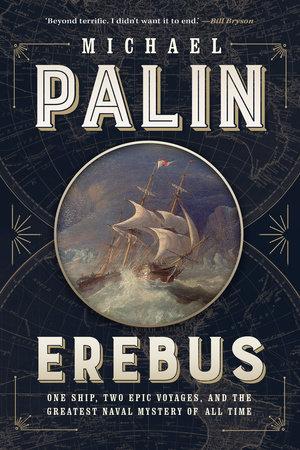Search Results: Returned 8 Results, Displaying Titles 1 - 8
-
-
c2009., McGill-Queen's University Press Call No: 910.9163 F832f Availability:1 of 1 At Your Library Series Title: McGill-Queen's native and northern series Volume: 57.
-
-
-- Erebus :2018., Random House Canada Call No: 910.91 P162e Availability:1 of 1 At Your Library Summary Note: "Intrepid voyager, writer and comedian Michael Palin follows the trail of two expeditions made by the Royal Navy's HMS Erebus to opposite ends of the globe, reliving the voyages and investigating the ship itself, lost on the final Franklin expedition and discovered with the help of Inuit knowledge in 2014. The story of a ship begins after the defeat of Napoleon at Waterloo, when Great Britain had more bomb ships than it had enemies. The solid, reinforced hulls of HMS Erebus, and another bomb ship, HMS Terror, made them suitable for discovering what lay at the coldest ends of the earth. In 1839, Erebus was chosen as the flagship of an expedition to penetrate south to explore Antarctica. Under the leadership of the charismatic James Clark Ross, she and HMS Terror sailed further south than anyone had been before. But Antarctica never captured the national imagination; what the British navy needed now was confirmation of its superiority by making the discovery, once and for all, of a route through the North-West Passage. Chosen to lead the mission was Sir John Franklin, at 59 someone many considered too old for such a hazardous journey. Nevertheless, he and his men confidently sailed away down the Thames in April 1845. Provisioned for three winters in the Arctic, Erebus and Terror and the 129 men of the Franklin expedition were seen heading west by two whalers in late July. No one ever saw them again. Over the years there were many attempts to discover what might have happened--and eventually the first bodies were discovered in shallow graves, confirming that it had been the dreadful fate of the explorers to die of hunger and scurvy as they abandoned the ships in the ice. For generations, the mystery of what had happened to the ships endured. Then, on September 9th, 2014, came the almost unbelievable news: HMS Erebus had been discovered thirty feet below the Arctic waters, by a Parks Canada exploration ship. Palin looks at the Erebus story through the different motives of the two expeditions, one scientific and successful, the other nationalistic and disastrous. He examines the past by means of the extensive historical record and travels in the present day to those places where there is still an echo of Erebus herself, from the dockyard where she was built, to Tasmania where the Antarctic voyage began and the Falkland Islands, then on to the Canadian Arctic, to get a sense of what the conditions must have been like for the starving, stumbling sailors as they abandoned their ships to the ice. And of course the story has a future. It lies ten metres down in the waters of Nunavut's Queen Maud Gulf, where many secrets wait to be revealed."--
-
-
1988, c.1987., Western Producer Prairie Books Call No: 917.199 B3695f Availability:1 of 1 At Your Library
-
-
Ã2017., General, McClelland & Stewart Call No: 919.8 W341i Availability:1 of 1 At Your Library Summary Note: The story of the greatest mystery of Arctic exploration and how a combination of marine science and Inuit knowledge led to the shipwreck's recent discovery. The book weaves together the epic story of the Franklin Expedition - whose two ships and crew of 129 were lost to the Arctic ice - with the modern tale of the scientists, divers, and local Inuit behind the incredible discovery of the flagship's wreck in 2014. Author Paul Watson was on the icebreaker that led the discovery expedition. Sir John Franklin and the crew of the HMS Erebus and Terror set off in search of the fabled Northwest Passage. The hazards they encountered and the reasons they were forced to abandon ship hundreds of miles from the nearest outpost of Western civilization, and the decades of searching that turned up only rumours of cannibalism and a few scattered clues - until a combination of Inuit lore and the latest science yielded a discovery for the ages.
-
-
2013., University of Calgary Press Call No: 910.92 C238s Availability:1 of 1 At Your Library Series Title: Northern lights series (Calgary, Alta.) Volume: no. 16.Summary Note: Benjamin Leigh Smith discovered and named dozens of islands in the Arctic but published no account of his pioneering explorations. He refused public accolades and sent stand-ins to deliver the results of his work to scientific societies. Yet, the Royal Geographic Societyœs Sir Clements R. Markham referred to him as a polar explorer of the first rank. Traveling to the Arctic islands that Leigh Smith explored and crisscrossing England to uncover unpublished journals, diaries, and photographs, archaeologist and writer P. J. Capelotti details Leigh Smithœs five major Arctic expeditions and places them within the context of the great polar explorations in the nineteenth century.
-
-
c1991., McGill-Queen's University Press Call No: 917.195 W892u Availability:1 of 1 At Your Library Series Title: McGill-Queen's native and northern series











